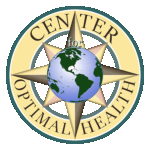griseofulvin
Updated June 20, 2023
File Access
click for comparison
From Open AI 6/20/2023
Griseofulvin is an antifungal medication that is used to treat various fungal infections of the skin, hair, and nails. It belongs to a class of drugs known as antifungals, specifically an oral antifungal agent.
Here are some key points about griseofulvin:
-
Mechanism of Action: Griseofulvin works by inhibiting the growth of fungi. It binds to the microtubular proteins, interfering with the mitotic spindle formation during cell division, and thereby inhibiting fungal cell replication.
-
Indications: Griseofulvin is primarily used to treat fungal infections of the skin, hair, and nails, such as ringworm (tinea corporis), athlete’s foot (tinea pedis), jock itch (tinea cruris), and fungal infections of the scalp (tinea capitis).
-
Administration: Griseofulvin is available in oral tablet or suspension form. It is usually taken once daily with fatty food or a meal to enhance absorption. The treatment duration can vary depending on the type and severity of the infection but may range from several weeks to several months.
-
Effectiveness: Griseofulvin is effective against certain dermatophyte fungi, which are responsible for most superficial fungal infections. It is not effective against Candida or other non-dermatophyte fungi.
-
Precautions and Side Effects: Griseofulvin should be used with caution in individuals with liver disease, porphyria, or systemic lupus erythematosus. Common side effects may include headache, nausea, vomiting, diarrhea, skin rash, and photosensitivity (increased sensitivity to sunlight). It may also cause rare but serious side effects, such as liver toxicity and blood disorders.
-
Drug Interactions: Griseofulvin may interact with other medications, such as oral contraceptives, warfarin, cyclosporine, and certain antifungal drugs. It can reduce the effectiveness of hormonal contraceptives, so additional contraceptive methods should be used during griseofulvin treatment.
-
Monitoring: During treatment with griseofulvin, periodic monitoring of liver function tests and blood cell counts may be recommended to detect any potential adverse effects.
-
Contraindications: Griseofulvin is contraindicated in individuals with a history of hypersensitivity to griseofulvin or any component of the formulation. It is also not recommended during pregnancy and breastfeeding.
It is important to note that griseofulvin is an older antifungal medication, and newer antifungal agents have become available in recent years. The choice of treatment may depend on the specific infection and the recommendations of a healthcare professional.
———————————-
Griseofulvin is an antifungal medication used to treat fungal infections of the skin, hair, and nails. It belongs to a class of drugs known as antifungals and works by inhibiting the growth of fungi.
Here are some key points about griseofulvin:
-
Mechanism of action: Griseofulvin works by binding to the microtubules in fungal cells, interfering with their function and inhibiting fungal mitosis (cell division). This disrupts the growth and reproduction of the fungus, ultimately leading to its death.
-
Indications: Griseofulvin is primarily used to treat infections caused by dermatophytes, a type of fungi that commonly infects the skin, hair, and nails. It is commonly prescribed for conditions such as ringworm (tinea corporis), athlete’s foot (tinea pedis), and fungal infections of the scalp (tinea capitis).
-
Administration: Griseofulvin is typically available in tablet or oral suspension form and is taken by mouth. It is usually taken once daily with a fatty meal or with whole milk, as fat enhances its absorption. The duration of treatment varies depending on the infection being treated and may range from several weeks to several months.
-
Absorption and distribution: Griseofulvin is absorbed from the gastrointestinal tract, but its absorption is variable and slow. It is metabolized in the liver and is highly bound to proteins in the blood. The drug is distributed to the skin, hair, and nails, where it exerts its antifungal effects.
-
Side effects: Common side effects of griseofulvin include gastrointestinal symptoms such as nausea, vomiting, diarrhea, and stomach upset. It may also cause headache, dizziness, fatigue, and allergic skin reactions. Rarely, it can cause more serious side effects, such as liver problems or blood disorders. It is important to report any unusual symptoms to a healthcare provider.
-
Precautions and contraindications: Griseofulvin is contraindicated in individuals with known hypersensitivity to the drug or its components. It should be used with caution in patients with liver disease or porphyria (a group of rare genetic disorders). It is not recommended during pregnancy, as it may harm the developing fetus.
-
Drug interactions: Griseofulvin can interact with other medications, including oral contraceptives, warfarin (an anticoagulant), and some anticonvulsant drugs. It may reduce the effectiveness of oral contraceptives and increase the metabolism of other drugs, leading to lower blood levels and potentially reduced efficacy.
It is important to note that the information provided here is a general overview and should not replace the advice of a healthcare professional. If you have any specific questions or concerns about griseofulvin or its use, it is best to consult with a doctor or pharmacist.
Terbinafine (Lamisil) is a yeast medication that is mostly used for toenail and skin fungal infections. It is also sold as a topical agent for OTC use, to paint on toenails.

This page is under development. Working links will provide starting information. Please let us know about your interest in this page by emailing us here, and check back soon.

